An imposter is a simplified representation of a 3D model. Manually creating a simple billboard imposter is a task that can take up to a few hours depending on the complexity of the model. With InstaLOD a multitude of Imposter Types can be created quickly and easily.
https://www.youtube.com/watch?v=3dqnY9Cba28
¶ Settings
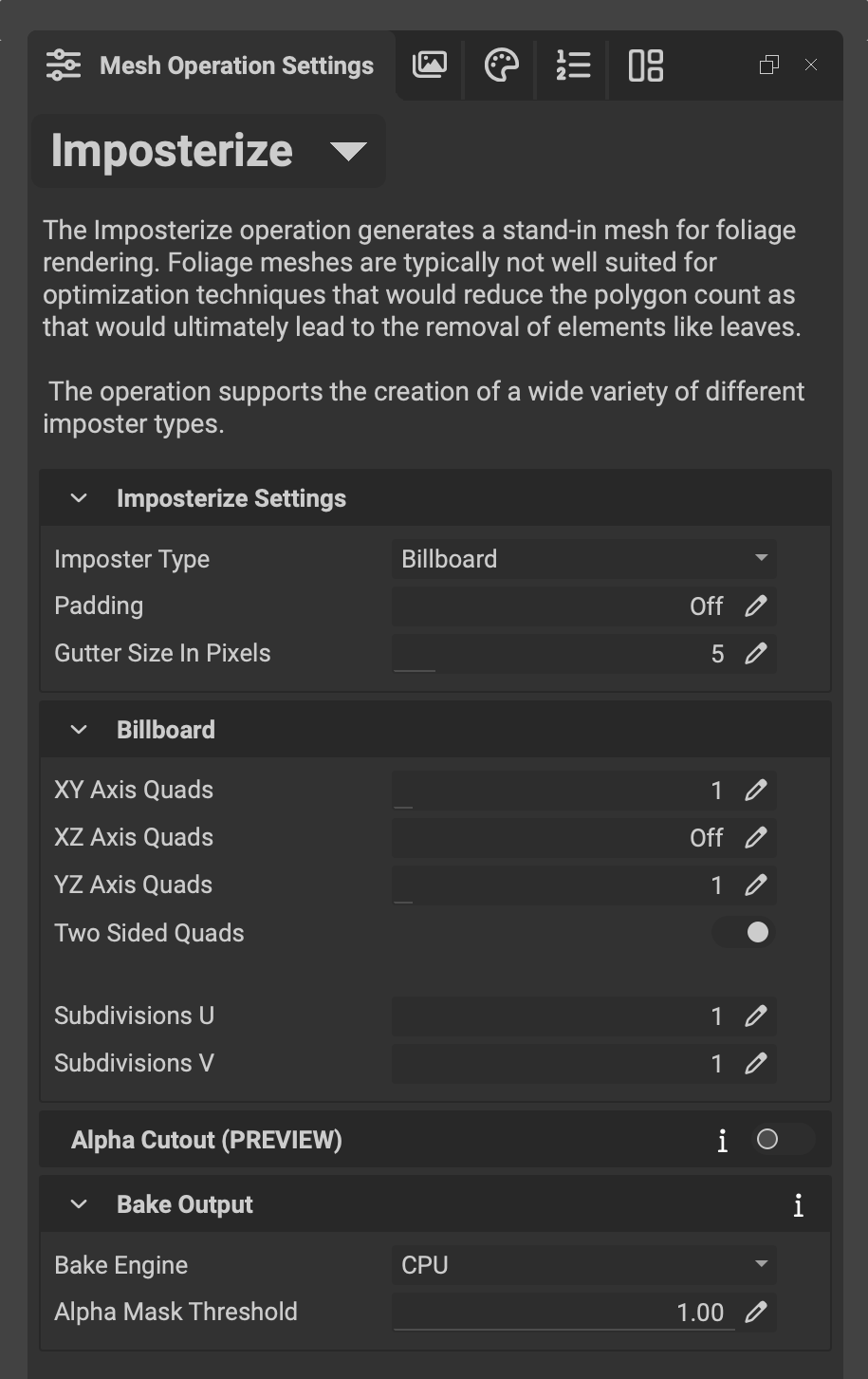 Although some imposter types have their own settings, most of the settings are identical across the different types.
Although some imposter types have their own settings, most of the settings are identical across the different types.
- Padding: Determines the distance in world units between the baked object and the edge of the imposter geometry.
- Gutter Size In Pixels: Specifies the minimum distance in pixels between each UV shell created.
- Alpha Cutout: Allows the removal of expensive-to-render alpha areas by cutting the geometry around the baked object.
Meshes with an
Alpha Mask Thresholdvalue equal to or below the specified value will be considered transparent when baking.
¶ Padding Example
The following is an example of using the Padding parameter.

Left: Padding 0 / Right: Padding 20
¶ Alpha Cutout Example
The following is an example of using the Alpha Cutout feature.
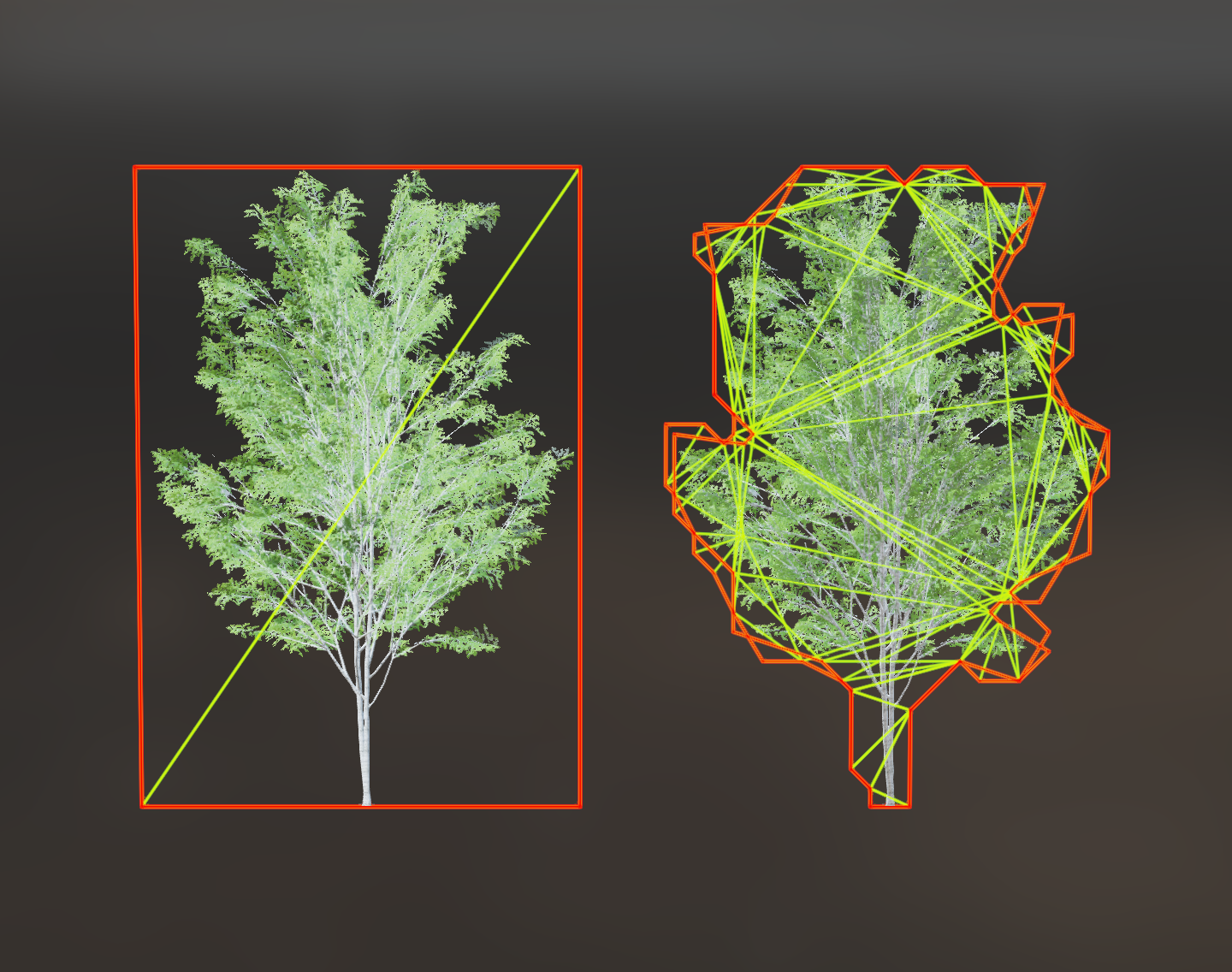
Left: Without cutout / Right: Cutout Resolution set to '32'
Note: When using models with input transparency/opacity textures, make sure that they are converted to greyscale textures and not RGB or they will not bake correctly.
¶ Imposter Types
InstaLOD features the generation of various different imposter types to fill a huge range of use cases.
¶ Billboard Imposter
The classic Billboard imposter is quick and easy to set up. By using the different world-space axes, the user can specify how many imposters per axis to create. Billboard imposters are great for distant objects that will not be seen from up-close or rotated around.
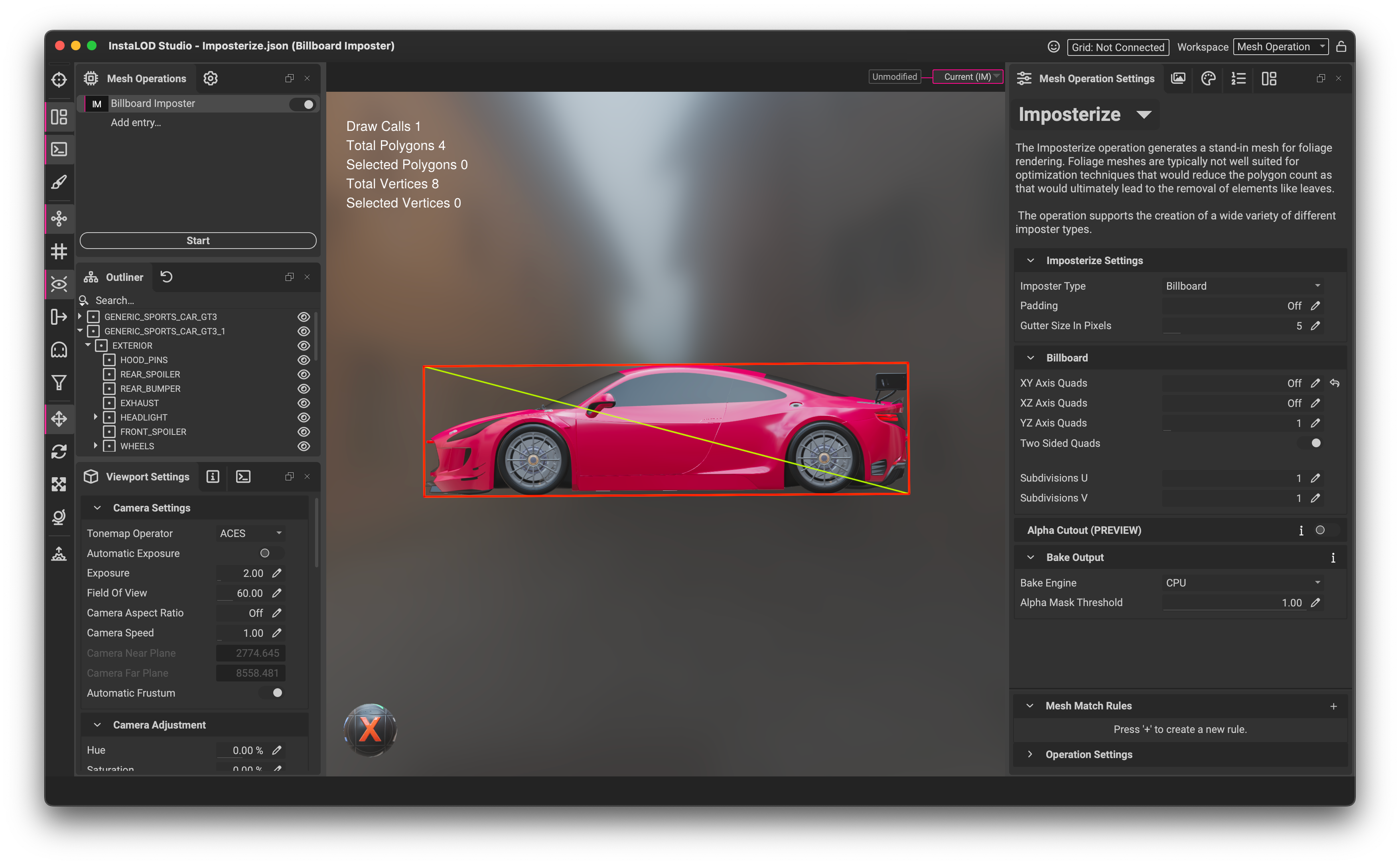
¶ Hybrid Billboard Cloud Imposter
The Hybrid Billboard Cloud imposter creates convincing illusions with volume when rotating around objects even from up close. This imposter generates a volume within the geometry area and places individual billboard faces within it.
If the mesh is composed of multiple parts, the Hybrid Mesh Face Factor determines the proportion of the specified Maximum Polygon Count that will be included in the cloud mesh versus the polygonal mesh.
For example: If the
Maximum Polygon Countis set to 100, and theHybrid Mesh Face Factoris set to 0.5, then the cloud part will have 50 polygons and the polygonal part will have 50 polygons.If the
Hybrid Mesh Face Factoris set to 0.2, the cloud part will have 80 polygons and the polygonal part will have 20.
A Hybrid Cloud Poly Mesh Suffix can be specified to instruct InstaLOD on which meshes in the scene to perform a polygon optimization. Other meshes in the scene will undergo cloud imposterization.
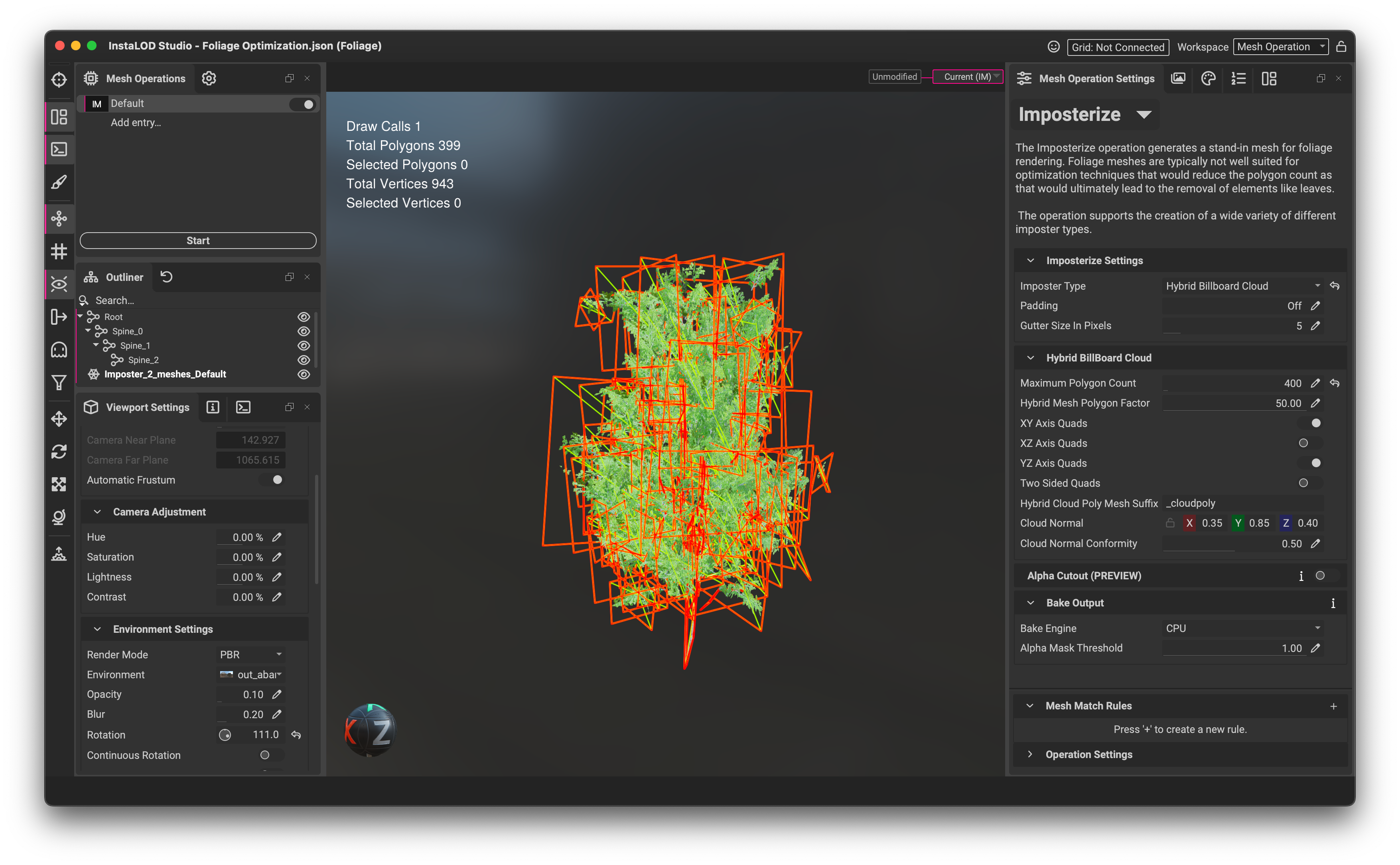
¶ Custom Geometry
Custom Geometry imposters are used to create even the most exotic imposters.
To use custom geometry as an imposter, the Imposter Mesh Suffix must be added to the custom geometry. By default, the mesh suffix is set to "_imposter" but can be changed to fit into any pipeline.
Keep in mind that
Custom Geometryimposters are generated from the normals of the custom geometry outwards.
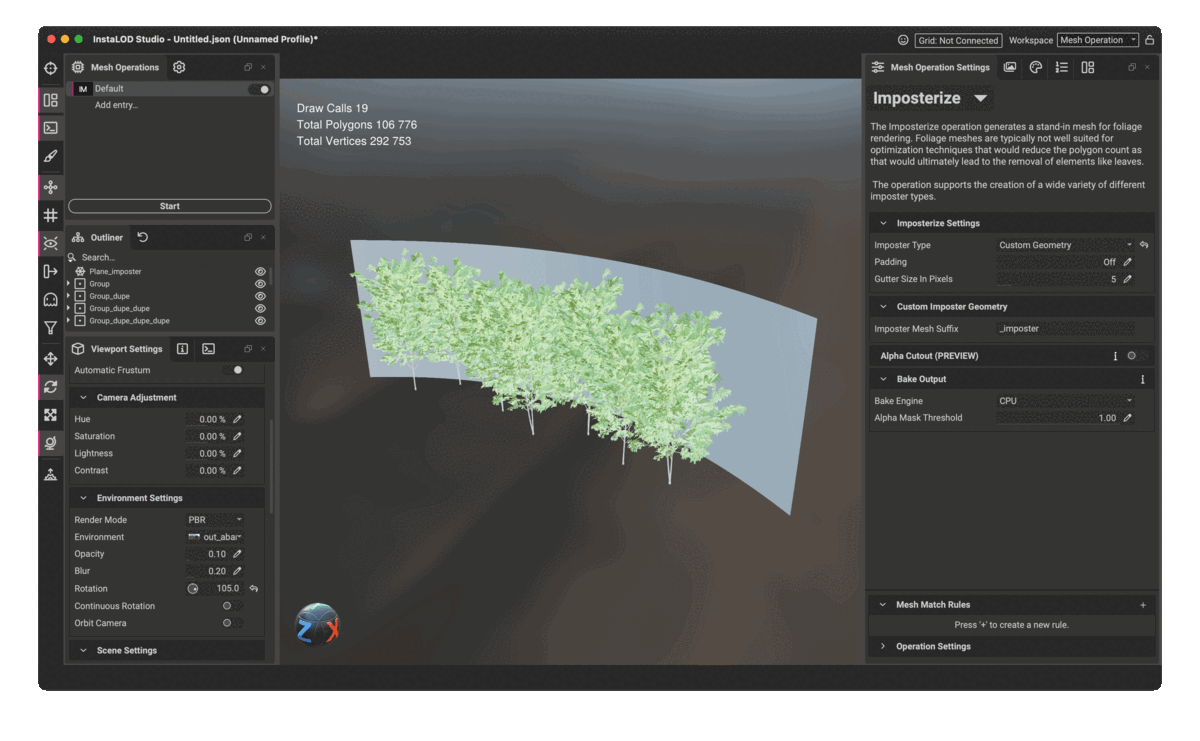
¶ AABB
The Axis Aligned Bounding Box imposter creates billboards at the bounding-box edge of the selected object. These are created on all axes and are useful when dealing with box-like objects e.g. hedges or buildings.
The additional setting Displacement moves the individual sides of the imposter to the center by the specified amount in world units.
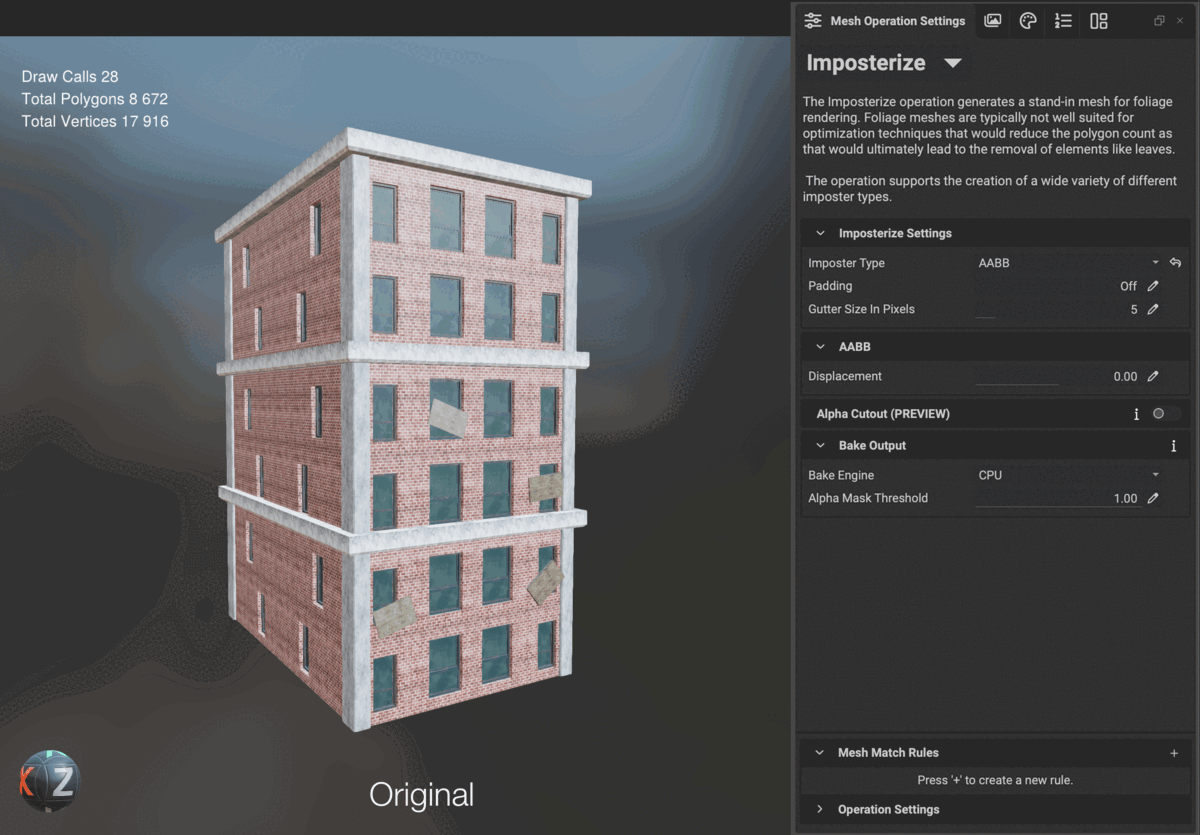
¶ Flipbook
A Flipbook imposter is made up of a single billboard that rotates around the pivot point to constantly face the active camera. Depending on the position of the camera in relation to the billboard, the UV-space shifts to show the corresponding texture tile with the correct orientation of the object displayed. This creates the illusion of a 3D object using just a single billboard.
The Flipbook imposter has the additional setting to choose how many Flipbook Frames Per Axis are created.
